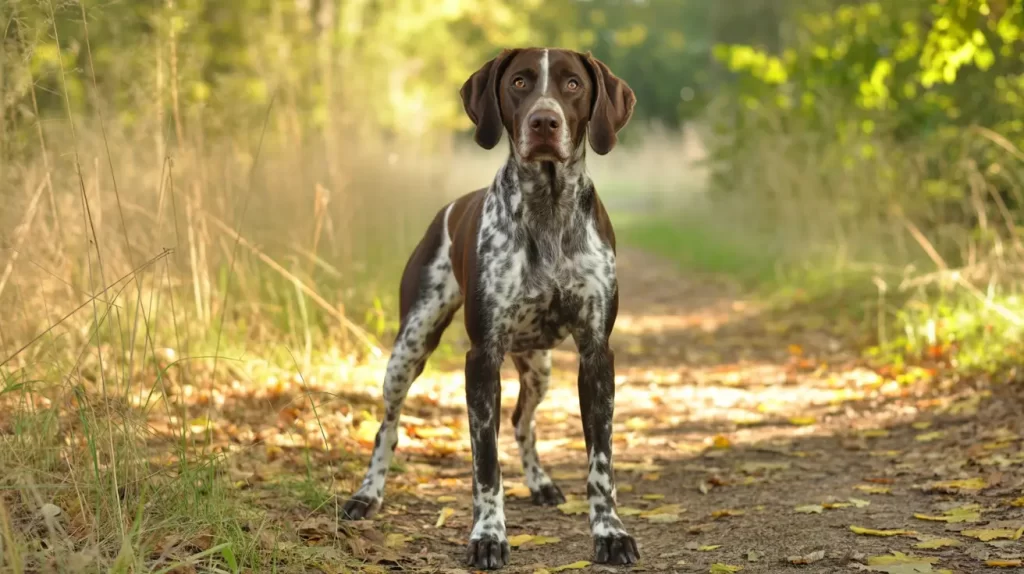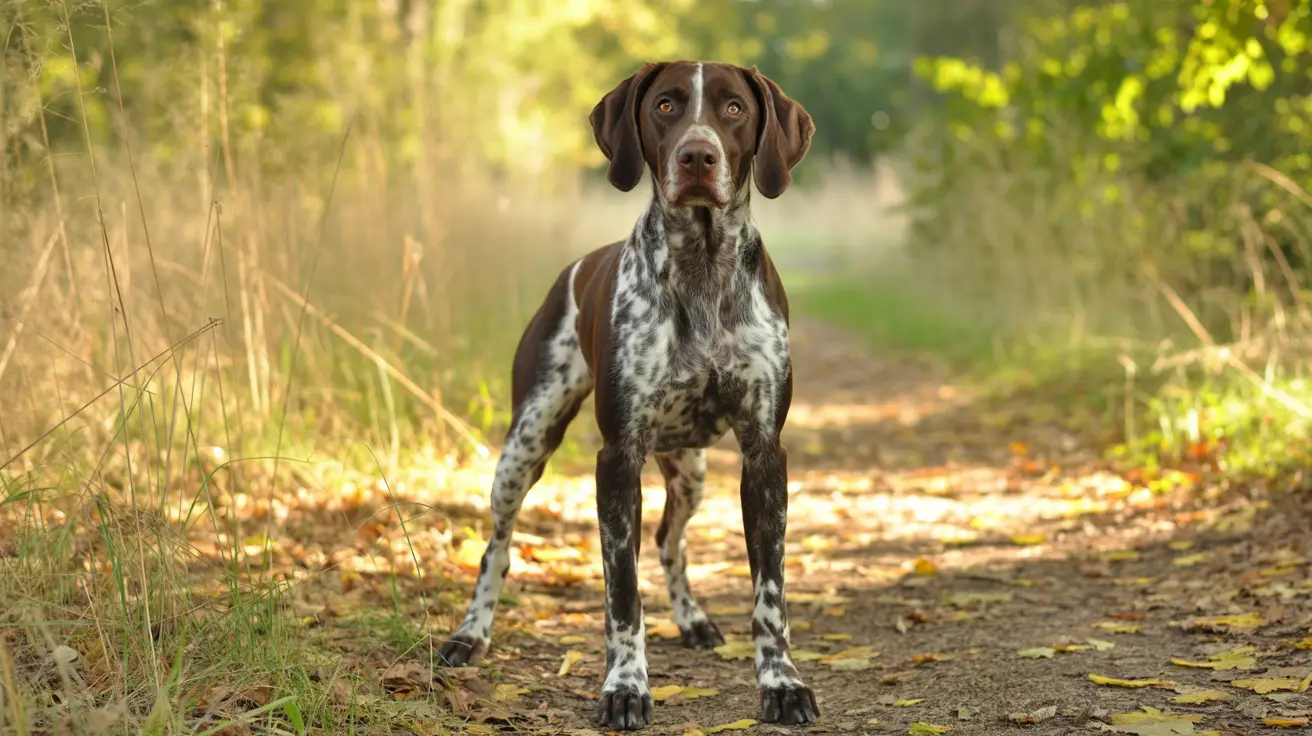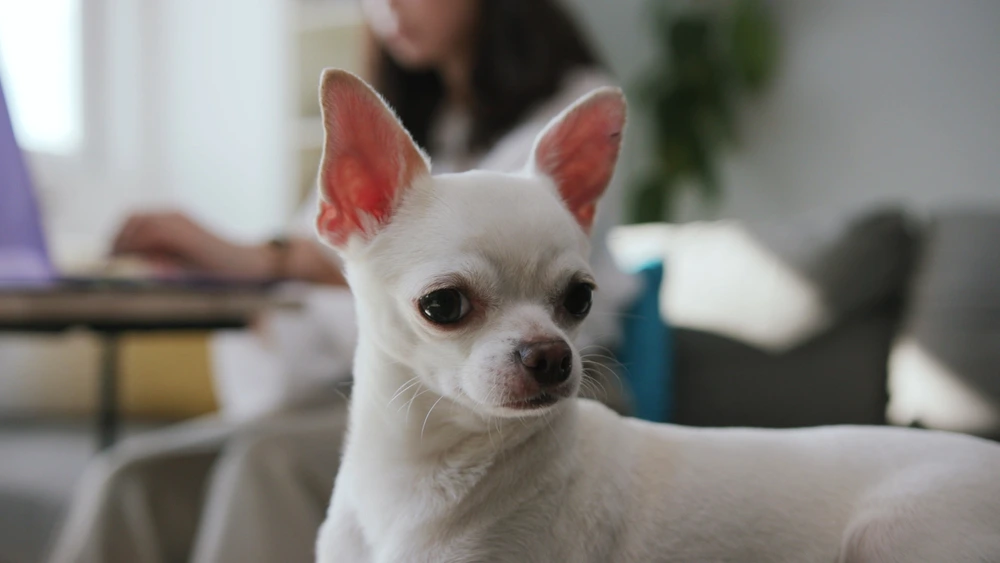If you’re looking for an energetic, intelligent, and loving canine companion who’s just as happy hiking in the woods as cuddling on the couch, the German Shorthaired Pointer (GSP) might be the perfect match. Known for their sleek build and boundless enthusiasm, these dogs are much more than just skilled hunters—they’re loyal family members with big hearts and even bigger energy levels.
In this guide, I’ll walk you through everything you need to know about the German Shorthaired Pointer breed, including their temperament, exercise needs, grooming routine, and a few insider care tips from my own experience working with these remarkable dogs.

Content
Quick Facts About the German Shorthaired Pointer
- Origin: Germany
- Breed Group: Sporting
- Height: 21–25 inches
- Weight: 45–70 pounds
- Lifespan: 12–14 years
- Temperament: Energetic, Intelligent, Loyal
- Best For: Active families, outdoor enthusiasts, and experienced dog owners
Breed Overview
The German Shorthaired Pointer was originally bred in 19th-century Germany as a versatile hunting dog capable of tracking, pointing, and retrieving both on land and in water. Today, their versatility still shines—not necessarily in hunting, but in how easily they adapt to different lifestyles.
While they excel in field trials and canine sports, GSPs are just as devoted at home. They love being part of the action, whether that’s going for a morning jog, chasing a ball in the yard, or helping you “hunt” for misplaced socks.
Temperament and Personality
When people ask, “Are German Shorthaired Pointers good family dogs?” the short answer is yes—provided they get the attention and activity they crave.
A GSP dog personality is typically affectionate and sociable. They bond deeply with their humans and often prefer to be where the family is—whether that’s the backyard, kitchen, or car ride. Because of their social nature, they can experience separation anxiety if left alone too long.
They’re also excellent with children, especially when raised alongside them. Their gentle temperament and playful energy make them great companions for active kids. However, their size and strength mean early training and supervision are important for smaller children.
Exercise Needs: Energy That Never Quits
If there’s one thing to remember about this breed, it’s this: a tired GSP is a happy GSP.
So, how much exercise does a German Shorthaired Pointer need? At least 1–2 hours daily of vigorous physical activity. This could be running, hiking, swimming, or participating in agility training.
When I fostered a young German Shorthaired Pointer puppy named Milo, I learned firsthand how crucial mental and physical stimulation is. Without structured activity, Milo would invent his own games—like reorganizing my shoe rack or chasing his tail for 15 minutes straight. Once I started daily scent-tracking games and long walks, his behavior improved dramatically.
That’s why GSPs do best in homes with space to roam and owners who can match their energy. Apartment life can work, but only if you’re committed to consistent outdoor time.
Training: Smart, Eager, and Occasionally Stubborn
Training a German Shorthaired Pointer puppy can be a joy because of their intelligence and eagerness to please—but consistency is key. Positive reinforcement works wonders with this breed.
These dogs love to work, and structured training keeps their sharp minds busy. Basic obedience, recall, and impulse control are musts from an early age. You can also introduce puzzle toys, hide-and-seek games, or even dog sports like dock diving or rally obedience.
Keep training sessions short, upbeat, and rewarding. GSPs can be sensitive, so harsh corrections might discourage them rather than help.
Health and Lifespan

The German Shorthaired Pointer lifespan typically ranges from 12 to 14 years. They are generally a healthy breed but can be prone to certain common health problems such as:
- Hip dysplasia
- Gastric torsion (bloat)
- Hypothyroidism
- Progressive retinal atrophy (PRA)
Routine vet checkups, a balanced diet, and proper exercise are essential to keeping your GSP in great shape.
I once consulted with a local veterinarian who shared a case study of a German Shorthaired Pointer named Daisy. Daisy’s owners noticed she was slowing down during her usual runs. After testing, the vet found mild hip dysplasia—common in active breeds. Through weight management, supplements, and adjusted activity, Daisy continued living a happy, pain-free life well into her senior years.
This highlights the importance of regular checkups, especially for active dogs who don’t always show discomfort easily.
Read More About: Golden Shepherd
Grooming and Coat Care
One of the easiest aspects of owning a GSP is their grooming routine. Their short, dense coat sheds moderately year-round but requires minimal upkeep—just a quick brush once or twice a week to remove loose hair and keep their coat glossy.
Regular ear cleaning is important, especially after swimming, since their floppy ears can trap moisture. Don’t forget nail trims every few weeks and basic dental care to keep their teeth healthy.
Owners often describe the breed’s coat as “wash and wear,” and that’s accurate. A quick wipe-down after an outdoor adventure usually does the trick.
Diet and Nutrition
A balanced diet supports their high energy and lean muscle mass. So, what’s the best diet for a German Shorthaired Pointer?
Look for high-quality dog food that lists real meat as the first ingredient. Avoid fillers and artificial additives. Active dogs may benefit from formulas designed for sporting breeds with extra protein and fat.
If you hunt or do agility with your GSP, consult your vet about adjusting their caloric intake to match activity levels. Overfeeding can lead to weight gain, which may worsen joint issues.
Living Conditions and Family Life
While the breed adapts well to various living situations, GSPs truly thrive in homes with a yard or access to open spaces. They can tolerate both warm and cool climates, but extreme temperatures should be avoided.
They do well with other dogs and can coexist peacefully with cats if introduced early. Early socialization is vital—exposing your German Shorthaired Pointer to new people, sounds, and environments builds confidence and prevents anxiety-driven behaviors.
If you’re someone who loves outdoor adventures, jogging, or weekend camping trips, this breed will happily be your shadow. However, if you prefer a low-energy lap dog, a GSP might be too much dog for your lifestyle.
Real-Life Case Study: The Trail Companion
A friend of mine, Sarah, adopted a German Shorthaired Pointer named Cooper during the pandemic. At first, she struggled to keep up with his seemingly endless stamina. Every morning, Cooper would run circles around the living room until Sarah took him on long hikes.
Eventually, Sarah enrolled him in a local scent-tracking class. Not only did this channel Cooper’s energy productively, but it also strengthened their bond. She says, “Cooper changed my routine completely. Now I’m more active, and he’s more content.”
Their story perfectly illustrates how, with the right balance of exercise and engagement, this breed becomes an incredible companion—loyal, loving, and full of personality.
Is the German Shorthaired Pointer Right for You?
The German Shorthaired Pointer breed is perfect for those who love staying active and want a dog that shares their enthusiasm for life. They’re affectionate with family, adaptable, and always up for an adventure.
However, they require time, patience, and plenty of daily exercise. If you’re ready for an energetic partner who will keep you on your toes, the GSP could be your dream dog.
Final Thoughts
The German Shorthaired Pointer is more than just a hunting dog—it’s a spirited, affectionate companion that brings joy and adventure to every household it joins. With proper training, regular exercise, and lots of love, your GSP will reward you with unwavering loyalty and a lifetime of memories.
If you love the elegant look of the German Shorthaired Pointer, you might also enjoy exploring our guide on White Fluffy Dogs for more adorable breeds.
FAQs
Are German Shorthaired Pointers a good family dog?
Yes, they’re affectionate, loyal, and great with kids, making them excellent family companions when given proper exercise and training.
What are the negatives of German Shorthaired Pointers?
They need lots of exercise, attention, and mental stimulation—without it, they can become restless or destructive.
Can GSP be aggressive?
German Shorthaired Pointers aren’t naturally aggressive but may show frustration if poorly trained or under-exercised.
Do German Shorthaired Pointers bark a lot?
They don’t bark excessively but may alert bark when bored or excited. Consistent activity keeps them calm and quiet.

Join Felipe Clark on a heartwarming journey through the world of pet adoption. He’s a true advocate for shelter animals, sharing stories that tug at the heartstrings and inspire adoption.
















